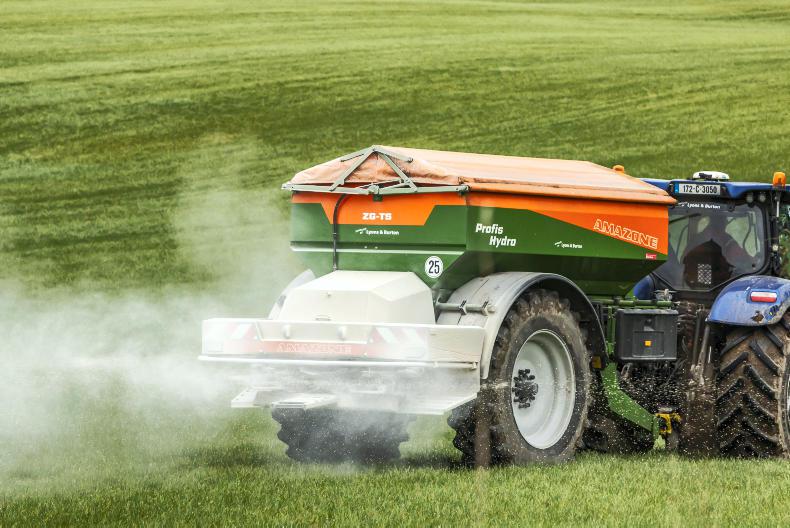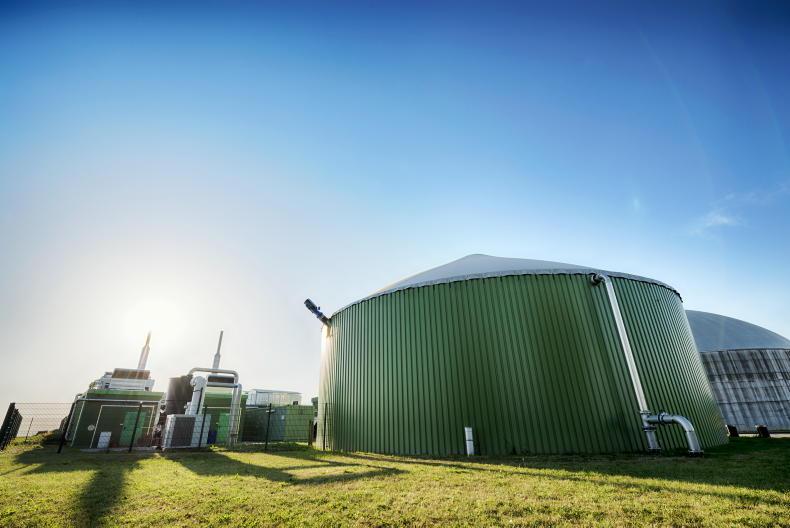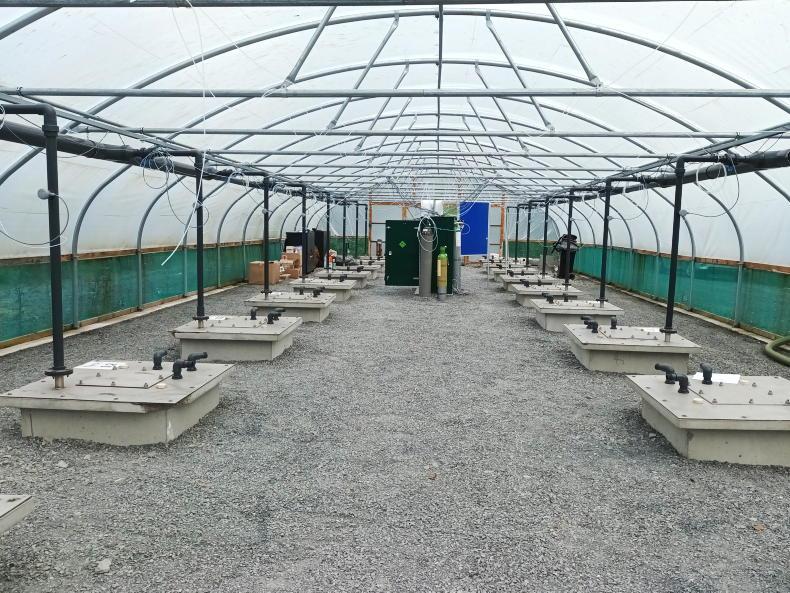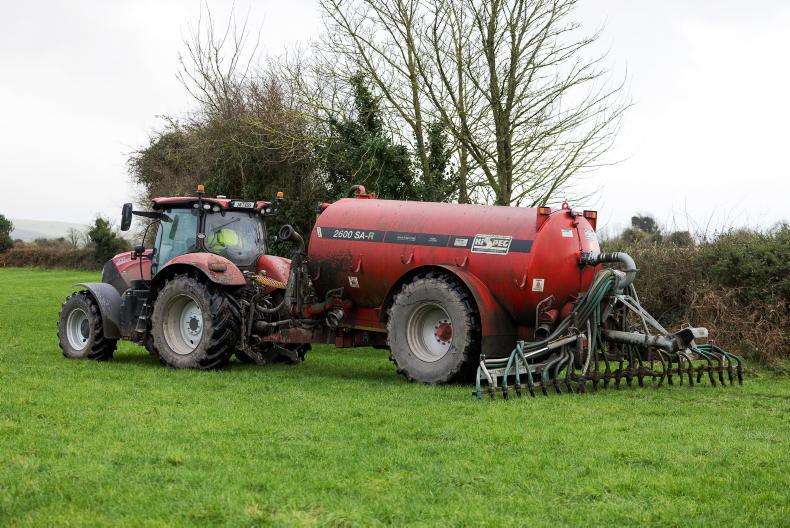Over the last number of years, the issue of emissions from agriculture has come to dominate much of the discussion around Irish farming. With agriculture accounting for such a large share of Ireland’s total emissions (34%), farmers have found themselves under increasing pressure to reduce greenhouse gas emissions from farming.
Given the dominance of livestock farming in Ireland, the issue of methane produced by ruminants has received the largest amount of attention when it comes to addressing agricultural emissions. However, while addressing the methane issue is still important, arguably the trickiest challenge facing farmers over the next decade will be meeting increasingly stringent targets for ammonia.
Firstly, what is ammonia and why is it a problem?
Ammonia is a form of nitrogen and is a colourless and very pungent greenhouse gas. It contributes indirectly to nitrous oxide (N20) emissions and also has a very negative impact on air and water quality.
Does agriculture cause ammonia emissions?
Agriculture is by far the largest source of ammonia emissions in Ireland, with an estimated 98% of ammonia emissions coming from farming. Ammonia emissions in Irish agriculture arise from animal manures and spreading nitrogen fertiliser.
When slurry or chemical nitrogen are spread by farmers, ammonia gas is released into the atmosphere. Ammonia also escapes from manure stored in slurry tanks under housing for livestock.
Ammonia is a form of nitrogen and is a colourless and very pungent greenhouse gas
The expansion in Ireland’s dairy industry has led to increased usage of chemical nitrogen by Irish farmers on their grasslands, which in turn is resulting in increased ammonia levels escaping into the atmosphere.
What targets has Ireland for ammonia?
Given its dangerous properties, the EU has set a national ceiling for ammonia emissions for each member state, including Ireland.
From 2010 to 2019, the ceiling for ammonia emissions in Ireland was set at 116 kilotonnes per annum. Since 2016, Ireland has been in breach of this ceiling, with the EPA estimating Ireland’s ammonia emissions for 2018 at 119.3 kilotonnes.
However, from 2020 to 2029, the EU has set an even stricter limit on ammonia levels for Ireland, which will now be reduced to a ceiling of just 112 kilotonnes. If Ireland continues to breach these ceilings, the government will incur millions in fines and penalties.
The expansion in Ireland’s dairy industry has led to increased usage of chemical nitrogen by Irish farmers
While the issue of ammonia has flown below the radar in Irish farming for many years, it is increasingly clear that reducing ammonia emissions below the EU limit will be one of the biggest challenges for Irish farmers over the next decade.
Many observers have commented that ammonia has the potential to become as highly regulated as the nitrates derogation, unless mitigation actions are taken by the industry.
Can ammonia levels be reduced?
The simple answer is yes. Although it is a very tricky problem to solve, there are a number of actions that farmers can take to reduce ammonia emissions from their farms. This week, Teagasc published a detailed new roadmap to reducing ammonia in Irish farming, which outlines 13 different measures that farmers can take to reduce ammonia.
The State agency has developed a new marginal abatement cost curve (MACC), which shows that farmers in the Republic of Ireland could reduce their ammonia emissions by 15.3 kilotonnes per annum at a net cost of €10.9m every year.
This would equate to a 13% cut in total Irish emissions and bring Ireland comfortably below the even stricter 112 kilotonne ceiling set by the EU for ammonia levels in Ireland up to 2030.
It is increasingly clear that reducing ammonia emissions below the EU limit will be one of the biggest challenges for Irish farmers over the next decade
However, the roadmap shows that switching to protected urea and low-emissions slurry spreading (LESS) technologies, such as a trailing shoe or dribble bar systems, are by far the two most cost-effective and impactful measures farmers can take to reduce ammonia emissions.
If implemented widely on Irish farms, these two measures alone would deliver up to 80% of the target outlined in the ammonia MACC curve, at a cost of €5.5m per annum.
They would result in a 10% cut in ammonia emissions from Irish farms and bring ammonia levels down to 107 kilotonnes per annum, which is still well below the emissions ceiling set by the EU.
Other measures outlined in the Teagasc analysis that will also help reduce ammonia include greater use of clover in swards as a natural source of nitrogen, increasing nitrogen use efficiency by improving soil health through liming and the reduction of crude protein in animal diets.
There is no question that solving the ammonia issue will be one of the biggest challenges facing Irish farmers over the next decade. But it is crucial that it is solved and ammonia reduction targets are met.
Ammonia is a very dangerous and toxic greenhouse gas. Reducing its impact is critical to ensure we have good water and air quality in rural Ireland. As Teagasc have outlined in their new roadmap, using protected urea fertiliser and LESS slurry systems will be the key changes that Irish farmers can make to meet ammonia targets.
Thanks to the TAMS II grant, we’ve already seen a major uptake in LESS slurry systems by contractors and farmers. Under TAMS II, a total of €23.5m has been paid out to farmers and contractors as grant aid on the purchase of close to 2,200 LESS slurry systems.
Ammonia is a very dangerous and toxic greenhouse gas. Reducing its impact is critical to ensure we have good water and air quality in rural Ireland
This is a very strong uptake, but efforts will need to be increased to ensure the vast majority of slurry spread in Ireland over the next decade is done via LESS slurry systems. If widely adopted, this technology will deliver very significant ammonia reductions.
On the protected urea side, the situation is less positive. Adoption of protected urea has been sluggish to say the least, with push-back on the product coming from a number of fronts.
However, protected urea’s potential to mitigate ammonia emissions is very significant and it is a technology that will need to see greater uptake in the years ahead, in order for Ireland to meet its ammonia targets.
Overall, Irish farming has a lot of work to do in order to meet its increasingly stringent ammonia targets. However, the technologies are there and a detailed roadmap is in place, which should allow Irish farmers to respond, adapt their farming system and show they can solve this tricky problem.










SHARING OPTIONS